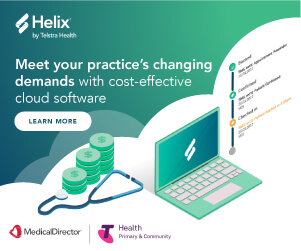Every bed is a hospital bed
Hospitals are facing increasing pressure to be efficient and ‘always on’, especially in times of crisis.
MedicalDirector’s CEO, Matthew Bardsley, discusses how leveraging better technology solutions can drastically change patient hospital experience.
I am sure everyone has had their own hospital experience, mine was when I broke my jaw and was in hospital for seven days. I remember lying there on the fourth day after surgery thinking I could be at home now, with someone else mushing my food so I can drink it through a straw. What if my own bed could become a hospital bed…?
If you have ever turned up to an emergency department in the middle of the night you might have noticed a few things. Did you see the security guard at the front door? The red power points that critical monitoring systems are plugged into, or the room with snoring coming out of it?
These are signals to the fact that the service you have just walked into runs 24/7. The security guard is there to ensure the safety of staff, resources and most importantly patients, the power point is supported by a backup generator in case of any scheduled or unscheduled outages, and the snoring, well that’s normally from a registrar who has just finished 14hrs straight!
As we move towards a world of always connected health as discussed in my last post, there is a natural requirement for the systems that support this to increase stability and security. As systems become accessible anytime and anywhere we must move these to infrastructure that support higher levels of stability and security.
This is where cloud infrastructure really shows its strength. For individual businesses to support this level of stability and security it would require serious capital input. Cloud aggregates the increased investment across multiple customers and provides a focus point for excellence in security and redundancy, much the same way a hospital does for the services it supports.
With always on systems, every bed in Australia can provide some form of care. My hospital visit could have been reduced by a few days, lowering costs and freeing up a bed for more critical patients. Data from home devices can stream in real-time into clinical applications, care monitoring can detect exceptions from this data, and GPs can organise a tele-consult with a patient if anything escalates. Delivering such innovation is possible when we enable the ideal through cloud.
This article authored by Matthew Bardsley originally appeared on LinkedIn.









